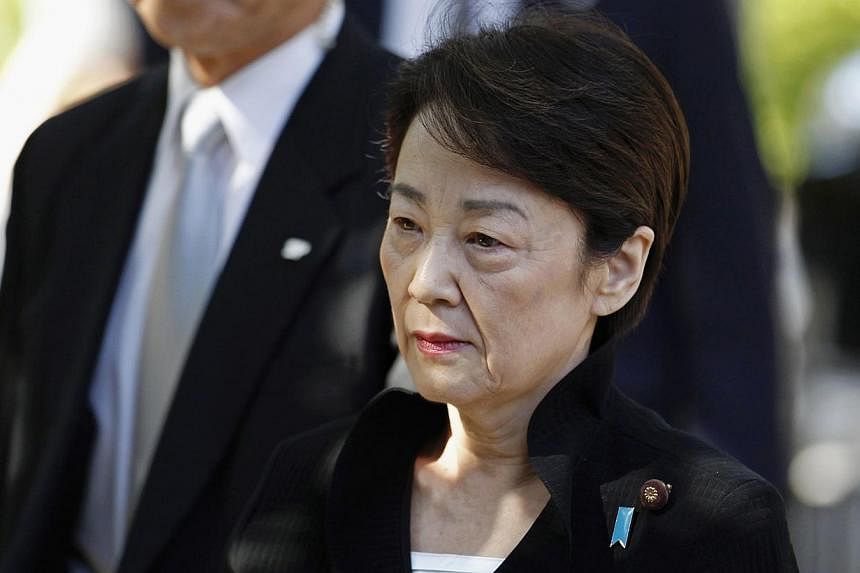TOKYO (AFP/REUTERS) - Three Japanese ministers visited a controversial Tokyo war shrine on Saturday, a day after Prime Minister Shinzo Abe prompted angry responses from China and South Korea by sending a ritual offering there. They are the first Cabinet ministers to join a pilgrimage by 100 lawmakers to the spot condemned by China and Korea as a symbol of Japan's wartime aggression.
Internal Affairs and Communications Minister Sanae Takaichi visited the Yasukuni Shrine in downtown Tokyo, a day after the cross-party group of parliamentarians also went to the site, in a move that angered Beijing. Domestic media reported that National Public Safety Commission chief Eriko Yamatani also visited the shrine soon after Ms Takaichi, followed by Ms Haruko Arimura, the minister tasked with promoting women and gender equality.
Ms Takaichi, who is a regular visitor to the shrine, went there on Saturday after telling reporters this week she wanted to pay her respects to those who have died in wars. The shrine honours wartime leaders convicted by an Allied tribunal as war criminals along with millions of war dead. "The nature of the visit should not be a topic that leads to diplomatic issues," Ms Takaichi told reporters. Several other ministers could also visit this weekend as the shrine celebrates its autumn festival.
The visit is likely to further irritate China, which voiced its anger on Friday at the pilgrimage to the shrine by 100 lawmakers and Mr Abe's offering of a potted tree with his name and title prominently displayed, saying it had ratcheted up regional tensions. Friday's visits came just hours after Mr Abe shook hands with Chinese Premier Li Keqiang on the sidelines of an Asia-Europe summit in the Italian city of Milan, despite tensions between the two powers. Mr Abe is thought unlikely to visit the shrine after he returns home Saturday from the summit.
In a photograph that emerged last month, Ms Takaichi, known for her conservative political stance, was seen next to the leader of a domestic neo-Nazi party.
Ms Yamatani has also been pictured with right-wing activists.
They have both denied links to extremism.
Mr Abe outraged Beijing and Seoul by visiting Yasukuni in person in December 2013. He has said he visited not to glorify war, but to honour those who fought and died for their country.
But he has stayed away from the shrine since the 2013 visit, instead sending offerings on key dates, seeking to tread a fine line between his conservative convictions and the diplomatic imperative to improve ties with China.
The 145-year-old Shinto shrine is the supposed repository of the souls of some 2.5 million citizens and soldiers who died in World War II and other conflicts. They include senior figures in the WWII administration, such as General Hideki Tojo, who ordered the attack on Pearl Harbour. The shrine is widely seen as a symbol of Japan's past militarism and visits there by politicians anger China and South Korea, which both suffered under Japanese occupation in the last century and feel Japan has never fully atoned for its actions.





